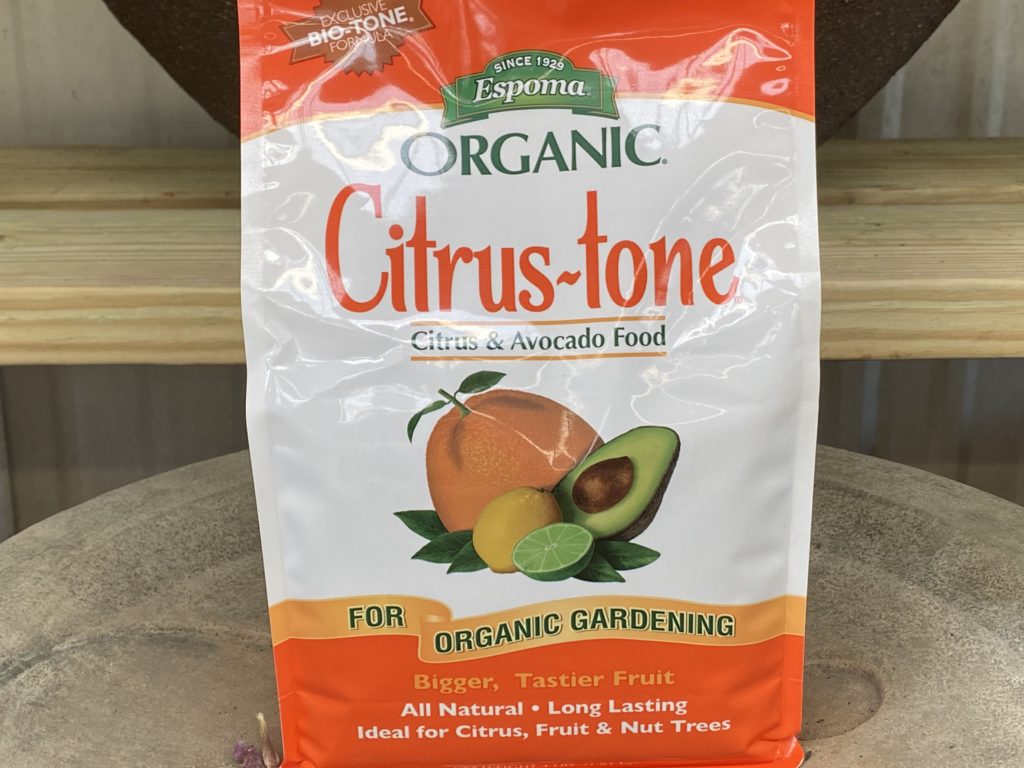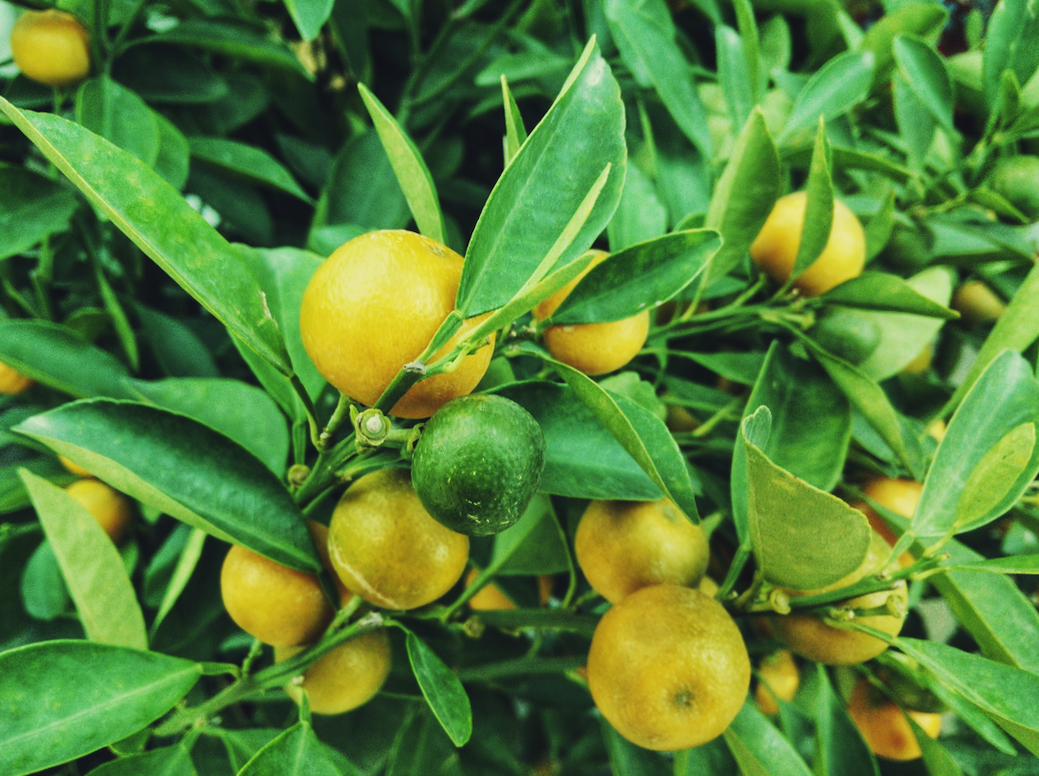We’re lucky in South Texas to be able to add citrus trees to our gardens with great success. Lemons, limes, oranges, grapefruit, kumquats, and more thrive here and produce lots of fruit with the right care – if you feed them, they feed you! Now’s the time. Here’s our recommended method.

We love organic CitrusTone by Espoma. It contains all the essential nutrients plus beneficial microbes that colonize in the root system and create stronger roots and a healthier plant overall. Sort of like eating healthy AND taking vitamins.
Citrus Feeding Schedule
- Late Winter January/February: Pre-bloom application will enhance flowering.
- Late Spring May/June: Post-bloom application will encourage better fruit set.
- Fall September/October: This will ensure overall nutrient needs are met.
How Much?
Citrus trees are heavy feeders – they need quite a bit of food to produce fruit.
| Citrus Tree Height | Amount of CitrusTone (using 4lb bag) |
| Up to 3 ft | 2 lbs. (1/2 bag) |
| 3-6 ft. | 4 lbs. (1 bag) |
| 7-9 ft. | 6 lbs. (1.5 bags) |
| 9+ ft. | 8 lbs. (2 bags) |
Pro Tips
Spread fertilizer at the drip line. ‘Drip line’ means the outer edge of the branches where water drips off when it rains. Don’t use fertilizer within 6” of the trunk. Spread evenly at the drip line, then water it in thoroughly.
Remove blooms for the first 2 years. Young citrus trees need to put their energy into growing roots and branches instead of producing fruit. This means once you start seeing blooms, be sure to pluck them off. This will prevent fruiting. Do this for the first 2 seasons, then your tree will be ready to sustain the weight of the fruit and the energy required to produce it.
For citrus trees in pots, use 1 teaspoon per 4″ of pot diameter. Double for pots over 12″. Feed about every 60 days late Winter to Fall.



Reader Interactions